
One of the remarkable features which have characterised the Republic of Benin is the growing influence of the Yoruba language, lore and culture. WALE EMOSU after a visit to the country reports the rich presence of the Yoruba people.
W on le gba poun mejo” (they may charge eight pounds), Rosette had guided me on the amount I was likely to be charged after I had sought to know the cost of the journey back to my hotel. My mind ran riot. It was my first day in Porto Novo, the capital of the Republic of Benin. ‘Poun mejo? (Eight pounds?). One thousand six hundred CFA Francs? How am I going to survive for about one week if I should start paying such an exorbitant fare for an okada ride that was not likely to take up to 10 minutes? Would I also be able to feed very well? Questions and a lot more on my mind.
I had taken the Beninese 200 Francs to be two pounds (poun), so I had calculated eight pieces to amount to 1600 CFA Francs. But Rosette picked out two pieces of 100 Francs from the many metal coins I was holding in my right hand to indicate their ‘poun mejo’. By implication, 25 Francs, to the Yoruba people of Benin Republic, is one pound (poun kan). This contradicts my orientation as a Yoruba man from Nigeria.
The currency ‘pound’ was introduced to Nigeria by the British colonial masters and the word, over time, corruptly became ‘poun’ among the Yoruba people largely found in the south west region of Africa’s most populous country. About two years before Nigeria’s independence in 1960, the country issued its own currency – also known then as pound – and this was in circulation until 1973 when it was replaced with naira. Two naira then exchanged for one British pound sterling. Ever since, the calculation of the average Nigerian who witnessed that period has always been marked by the orientation that the pound is exchanged only for the double of its amount.
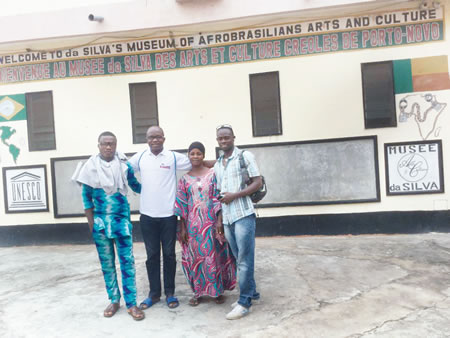
I grew up to hear and see the older Nigeria Yoruba do their monetary calculation using that exchange rate, despite the fact that the exchange rate is exorbitantly very high these days, astronomically higher than what it used to be in the years past. This is the mind with which I went to the Republic of Benin in my quest to unravel the typical lifestyle of my Yoruba ‘kinsmen’ who have only found themselves in another territory. Before my sojourn, I had not envisaged to see or experience a marked difference in the worldview of the average Beninese Yoruba from that of his counterpart in Nigeria.
But my understanding of the fact that their system of monetary evaluation, further buttressed by the fact the way they calculate ‘apo owo’, literally bag of money, is different from the way it is done among the Yoruba of Nigeria, did not leave me in doubt of a people who have dynamically found different ways to life and living, which may have been influenced by their immediate environment. For instance ‘apo (owo) kan’ among the Yoruba of Nigeria equals 200 naira in his country and else where he finds himself. So for anyone with such orientation, ‘apo kan’ in Benin would be 200CFA. This calculation is age-long from the time the cowrie was the medium of commercial exchange, when 200 cowries, always bundled in a local sack, equaled ‘apo kan’. This is not so in Benin Republic, where ‘apo kan’ is 1,000CFA.
The Yoruba, according to the CIA World Factbook, are one of the largest ethnic groups in Africa, with its 2013 estimation that put the number of the people at 40 million, or 21% of Nigeria’s total population. And outside of Nigeria, ethnically diverse Benin Republic is the country with the largest number of Yoruba going by the 2016 projection of the National Statistical Institute of Benin, that states “15% of a projected 2017 Beninois population of 11.34 million would be Yoruba-speaking groups.” The numerical translation of that percentage is 1.70million people who can be found in the Yoruba towns like Porto Novo, Ketou, Pobe, Ajawere, Sabe, Onigbolo and other places.
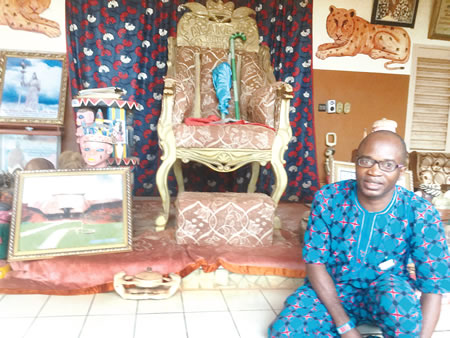
My quest to unearth details about the Yoruba in Benin Republic took me to certain historical places and institutions and one of them was Museé da Silva, which was one of my first ports of call in Porto Novo. There, I met Rosette who bailed me out of my imbroglio of cultural sort. The museum, which houses the artifacts of Afro-Brazilians in Benin Republic, sits on about six plots of land and it is said to be owned by Karim da Silva, now 89 years old. However, the 1870 Afro-Brazilian building was built by Karim’s father, Faustin Amzat Geo da Silva.
Afro-Brazilians are the descendants of African slaves ferried to Brazil hundreds of years ago and up till today, long after the abolition of the slave trade, Salvador, the capital of Bahia state in Brazil, is home to Afro-Brazilians; many of who have never been to their native Africa. Only a few, like the da Silvas, have been able to practically trace their origin; this writer was able to confirm it when he visited the South American country in 2014.
Apart from visits to historical places and institutions, I also took my inquiry to the street. There, my encounter with Innosn Olajide Oloyede, a pastor with The Apostolic Church, Iyana Towe, turned out to be insightful. I had met Pastor Oloyede in a commercial car on my way to Ketou and just before the take-off at Ouando, noted for its large market and exhilarating nightlife, I engaged him in a conversation. “What are the differences between the Nigeria Yoruba and those of Benin Republic?” I had asked. “The differences are not so much,” Oloyede, himself Yoruba from Ajawere replied.
The differences, according to him, are remarkable in the intonations of the Benin Yoruba and this is because of the influences other languages like Egun, spoken in Benin have on the Yoruba language. This, he added, leaves the Benin Yoruba speaker with pitch production unlike the Nigeria Yoruba speaker.
This was confirmed by Chabi, a curator at Museé Ethnographique de Porto Novo. The museum harbors all sorts of ancient fetishes associated with the Yoruba, costumes and musical instruments from the different cultures that can be seen around. Chabi, in explaining how the Benin Yoruba language became ‘corrupted’, first traced the history of the peoples of the country as it is presently made up. According to Chabi, Benin Republic is a conglomerate of cultures and traditions from other lands.
For instance, Chabi explained that the north west of the country is occupied by migrants from Natitingou, Berba, Waaba and Betamaribe in Burkina Faso. In the north east are people from Fulbe, Dendi, while migrants from Togo settled in the southern part. Relations with these peoples who also came with their different trades and vocations, have rubbed off on the essence of the first settlers in present-day Benin Republic — the Yoruba people — including their language. The Yoruba people are mostly found in the south east and south south of the country.
Perhaps among the impressions these other peoples and cultures have left on the Yoruba language as we have it in Benin Republic today is the presence of vowel and consonant clusters in their words like, for instance, ‘Allade’ and ‘Ketou’. These are becoming a rarity in Nigeria Yoruba.
Overgeneralization of linguistic rules and the transfer of others (into the Yoruba language) are a nucleus of Yoruba language usage in Benin Republic. Nathaniel, who is in his early 20s and a front desk guy at the hotel I lodged in, in Porto Novo, would always ‘gbe’ owo (carry money) as light as 1,000 CFA, while among the Nigeria Yoruba, the verb would have been to ‘mu’ owo (take money). The only time the Nigeria Yoruba would carry (‘gbe’) money is when so much of it has become a load. A friend of this reporter could not but be amused at the use of the verb ‘carry’ by her friend’s mum who meant to give her 50 naira for a favour she had done for the old woman who had come visiting her daughter at the university. That was about 25 years ago; it is doubtful if a member of the new generation of Nigeria Yoruba speaker would use ‘gbe’ in that context.
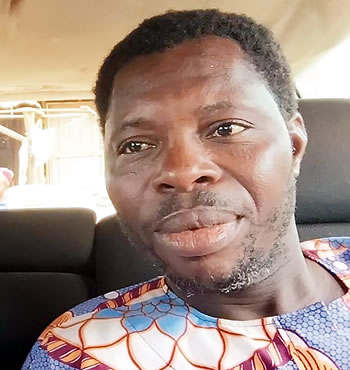
Pastor Oloyede, despite living in Ifo, Ogun State, Nigeria for 15 years, still demonstrated the peculiar use of the Yoruba diction within the territorial space of Benin Republic. He told this reporter a story: “Ni igba ti oba Pobe se, ti won fe je oba tuntun, won ranse si Alaafin Oyo. Looto Kabiyesi o le wa, sugbon won fi iko ranse.” (When the King of Pobe joined his ancestors, and it was time for the installation of a new king, the Alaafin of Oyo was invited. Though he could not attend, he sent representatives). I had interrupted Pastor Oloyede to ask for the meaning of ‘se’ which is unknown to standard Nigeria Yoruba. ‘Se’, according to Pastor Oloyede, is the same thing as the widely accepted ‘waja’ (literally enter the rooftop) among the Nigeria Yoruba. In the Yoruba belief system, kings don’t die since a successor will ascend the throne; they rather join their ancestors (waja).
The link of some Nigerian Yoruba towns with the geographical space known today as Benin Republic dates back to ages with immigrants from these towns said to be the original settlers of such towns. Chabi, the curator at Museé Ethnographique de Porto Novo, told South West that the forebears of Save came from Abeokuta, Oyo and Ile-Ife. In actual fact, he added that the country’s name ‘Benin’ was adopted by former President Mathieu Kerekou, from “Benin City, a small city in Nigeria, whose people were the first to settle in Dahomey [Benin Republic’s former name]”. Another account, however, claims it was named after the Bight of Benin, a bight in the Gulf of Guinea area on the west African coast.
While speaking to South West, Pastor Oloyede, going by the story his mother told him, said their forefathers migrated from Oyo town to come and settle in Ajawere, though he admitted his little knowledge about the town. However at Museé da Silva, South West was told the story of how Ajase, otherwise known as Porto Novo came into being. Two of the guides, Olive Adande and Allade Ferdinand Affognon, between them took this reporter on a trip down memory lane. According to them, three hunters, Anata, Akapo-Ogaju and Ogbon, had set out on hunting expedition from Yorubaland and journeyed to a spot where they were confronted by a nine-headed creature (Abesan).
During the face-off between the hunters and the Abesan, the latter was said to have retreated and was later swallowed up by the earth. The hunters were said to have thereafter returned to Yorubaland where they consulted an oracle. But the oracle was said to have instructed them to return to the spot where Abesan was swallowed up to reverence and worship him always.
But upon return to the spot, the three hunters met the Aja people from Togo, who had settled there. A fight ensued and the three hunters overran the Aja people, from which came ‘Ajashe’ (which would be called ‘Ajase’ by the modern-day Nigeria Yoruba), meaning the Aja war is conquered. Ajashe was later renamed ‘Porto Novo’ (new port) by the Portuguese in the 16th century.There is a centre dedicated to the worship of the Abesan till today in the heart of Porto Novo or Ajashe, as one may choose to call the town.
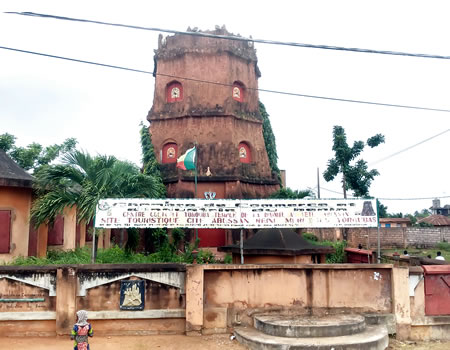
Adande and Affognon also spoke about the Afro-Brazilian influence on the Yoruba community in Ajashe. And this itself has the Nigerian angle to it. According to them, a certain Arogundade, a 14-year-old prince of Oyo was sold into slavery in Brazil by his family to stop him from becoming the king after the death of his father. While in Brazil, Arogundade’s master, Paraiso Josey, who had difficulty relating with the name, changed Arogundade’s name to Paraiso Piquino Bambero. After the emancipation, Arogundade (Paraiso Piquino Bambero) returned to Nigeria, but had to flee when his people who had thought he had returned to lay claim to the throne made an attempt on his life.
Arogundade was said to have found refugee in Okun Seme in today’s Benin Republic. While there, he brought his influence and exposure to bear on the country. According to history, Arogundade played a major role in the first trade treaty Porto Novo signed with France during the reign of De-Sodji. Twenty years later, Arogundade’s son, Ignacio Souleyman Paraiso, was instrumental in the signing of the second treaty. This was during the reign of King Tofa. Ignacio Souleyman Paraiso, who was the head of the Afro-Brazilians in Porto Novo, was the maternal grandfather of Karim da Silva, owner of the Museé da Silva.
The Great Mosque is one of the symbolical structures of the Afro-Brazilian community in Porto Novo till today. The mosque, built by the Afro-Brazilians between 1923 and 1925, was replicated in Lagos by the returnee Afro-Brazilians. But while the Porto Novo mosque, built opposite the former ‘oja eru’ (slave market) is still standing and in use till today, the Lagos mosque, built between 1908 and 1913, was torn down in 1980.
While this reporter was not opportune to see the gelede festival which, according to Museé Ethnographique de Porto Novo curator, Chabi, is from Abeokuta, his visit to Ketou was timely for him to see the oro festival in session. Ketou is another Yoruba town in Benin Republic, which is 117km north of Porto Novo. It was the second day of the festival expected to last 15 days, the streets were in a frenzy as men, boys – all classes of the male gender – were in ecstasy for the annual festival. It excluded women – the normal practice like in any Yoruba community in Nigeria observing the festival.
Speaking to South West, Adelakun Oseni, the Ketou guide who literally propels his points on the horse of Yoruba proverb, explained that during the festival, propitiations are made by the oro for the well-being and betterment of the community. He added that the festival is normally observed between August and September, when school children are expected to be on holiday. It is around this period too that the festival is observed, notably among the Ijebu and Remo people of Nigeria Yoruba, though Oseni said that the festival, as bequeathed to them, was from Abeokuta, which in any case, is also a Yoruba town in Nigeria.
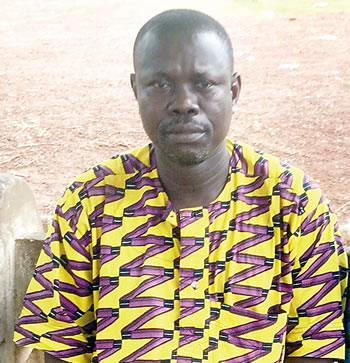
Telling a brief history of the town, Oseni said that their forebears took off from Ile-Ife until they got to their present settlement. In establishing the town, the Ifa oracle was said to have requested for a hunchback to be sacrificed. The name of the town, Ketou (‘Ketu’ in standard Nigeria Yoruba), according to Oseni, was derived from the fact that as much as there was nothing that could separate the hump from the hunchback except death, no war or any circumstance would be able to ravage the town; it would remain impregnable.
“Back then, the oracle had asked, ‘Ke n tuke lehin abuke?’ [what can separate the hump from the hunchback?]. From there, the town derived its name, ‘Kentuke’. It was the colonial masters that changed it to ‘Ketou’”, Oseni told South West.
Encounter with the Alajase Onikoyi-Abesan
My knowledge of the fact that traditional rulers are central to the Yoruba customs and traditions of their people propelled this writer to go after the traditional numero uno of the towns I visited for proper enlightenment on the norms of the land.
I could not get to talk to the Alaketou of Ketou, Oba Alaro Alade-Ife, who I was told at the time of my visit was indisposed. I was, however, fortunate to meet the Alajase Onikoyi Abesan of Porto Novo, Oba AbdulYekeen Ajasa Sanni. Though my interactions with the royal father turned out to be informal as he insisted I must formally request for an appointment, it was not less interesting as it was dramatic. Kabiyesi’s insistence on an appointment was hinged on him and his chiefs getting well prepared for my inquiries.
I had gone to the palace to ask questions as a journalist is wont to do and my inquiries, of course, were to be on the Alajase’s Yoruba subjects. But after greetings to the royal father and an explanation of the restrictions by my not booking an appointment, the tide changed; the interviewer became the interviewee.
“What is your name?” The Alajase asks.
“Adewale”. “Adewale who?”
“Adewale Emosu”. “What is the meaning of ‘Amosun’?”
“It’s ‘Emosu’ sir. “Amosun and Emosu are the same thing.”
“The Emosu are the family that handle osun in a town. They are the ones in charge of it. Osun is camwood is ointment rubbed on children,” I explain.
“That is good of you. The Amosun are also here in Ajase. They are the family thrust with the responsibility of bearing the calabash containing the camwood while the substance is being applied on someone being prepared for Ifa initiation.”
The dual cap of a journalist and a Yoruba man I literally wore into the Alajase’s palace confers on me the responsibility not only to be well knowledgeable about myself, but to know something about everything and vice versa. For one it is said that “Bi omode ko ba itan, a ba aroba; aroba ni baba itan (if a child does not catch up on the storied past, the same child will not miss the folklore, which is father to history). The telltales are always there for every Yoruba to connect them with their missing links. Whether they all explore them for their benefit is another question.
And the journalist can’t just afford to be like the proverbial shard of light that can’t illuminate its beneath while it burrows into others’ entire being.
You May Also Like:
At world festival, Sango rises to global recognition



